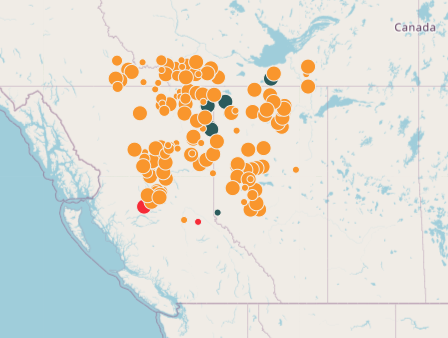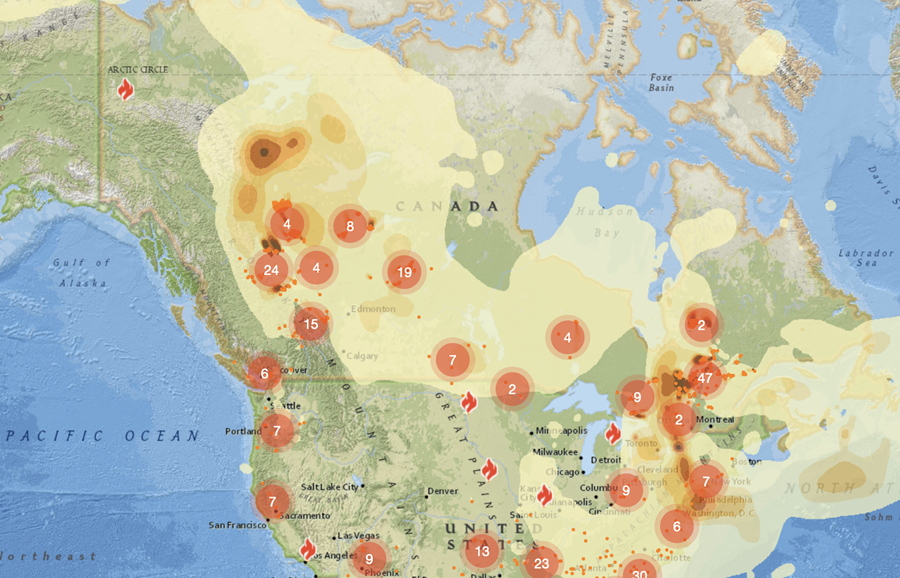For the up-to-date Fire Rating please call: 1-877-847-1577
Forest Fire Danger Rating and Open Air Burning

NO DAYTIME BURNING from April 1st to October 31st.
Current Fire Danger Rating – MODERATE

Missed the event?
Check out the recording and resources here.
Talking Fire – Chris Hatch
June 30 2024 – … That’s the “what.” The “why” is fossil fuels. Burning oil, gas and coal accounts for 91 per cent of heat-trapping carbon pollution. But only 11 per cent of news stories about climate change mention fossil fuels, even in passing. more
Zombie Fires and Smouldering Desire

February 25, 2024 – Chris Hatch – Zero Carbon Newsletter
The fire map for Western Canada is shocking — the orange dots are the hibernating zombies, only the fires coded in red are considered “out of control.” But I’m sure many of you will have the same reaction I did: “It’s only freaking February!”
This weird winter has other Canadians anxious as well. “As Ontario’s vast forests become more volatile, its wildfire program grows increasingly fragile due to a series of crises the government has been ignoring for years,” says Noah Freedman, a forest fire crew leader.
The fires of public opinion might be smouldering like the zombie fires seething underground, according to some tantalizing new research. What if I told you that 89 per cent of people around the world think their government should do more to fight global warming? Skeptical? I certainly was. But…
Suggested Books – Fire Weather by John Vaillant – the Fort McMurray disaster.
Video: John Vaillant Testifies to Parliament on Oil Industry as a Fire Industry (5 min)
What do the Fire Danger Ratings mean?
The Muskoka Fire Danger Rating is determined using the Fire Weather Index, an internationally used method for determining the risk of fires in open air. It uses factors such as the relative humidity, temperature, previous 24-hour rain amount, wind directions and wind speed in combination with the forest fuel type and loads to determine the risk of the forest to certain fire types. From this calculation the Forest Fire Danger Rating is made in consultation with the Fire Chiefs of the six area municipalities and the Ministry of Natural Resources.
Low
Low danger of fire. You may conduct any municipally permitted fire activities. No daytime burning. Campfires for cooking and heat only.
Moderate
Moderate danger of fire. Carry out permitted fire activities with caution. No daytime burning. Fires for cooking and heat when there are no other sources. Extra care is required for all burning.
High
High danger of fire. Only absolutely necessary municipally permitted activities should be carried out. However, it is recommended that no burning should occur. A total fire ban may be in place. No daytime burning. Avoid campfires. Use extreme caution with all fires.
Extreme
Extremely high fire danger. Absolutely no burning of any kind should be carried out. Total fire ban in place. No burning at any time, includes charcoal barbecues. Fireworks are banned.
Fire Ban
In some cases, should the fire danger rating be at a high or extreme, the municipality should choose to issue a fire ban. When the fire ban is in place, no burning of any kind is permitted. Fireworks are not permitted. Fire ban in effect.
More info: Wildfire smoke, air quality and your health
Click on the pic for a high resolution, up to date, interactive forecast

Canada’s “hellish” wildfire season defies the calendar

Sept 29, 2023 – Andrew Freedman – Axios
Canada’s wildfire season, already the worst on record, went “completely off the rails” during the past week, scientists tell Axios.
The big picture: Enough land area burned in the past week to make the seven-day-period comparable to nearly an entire typical fire season across Canada, according to Merritt Turetsky of the University of Colorado.
- While five provinces and territories, stretching from Nova Scotia to the Northwest Territories, saw record amounts of land burned this season, western Canada has been hit the hardest, she said in an interview.
- “Things have just continued to play out in kind of a hellish way in western Canada,” she said.
- During the past few days, smoke from wildfires in British Columbia and the Northwest Territories has tinted the skies over Greenland and northern Europe.
These fires are burning at a time of year when Canada’s fire activity tends to be on a sharp decline.
The Jimi Hendrix Experience – Up from the Skies (1967)
Ecology didn’t really establish itself as a topic in pop until the early 70s: there’s something almost eerily prescient about this jazzy single, on which the sci-fi obsessed Hendrix had aliens return to Earth for the first time in thousands of years and note the “smell of a world that has burned” – “maybe it’s a change of climate”.
Listen below from minute1:20 to hear the lyric.